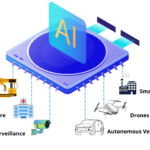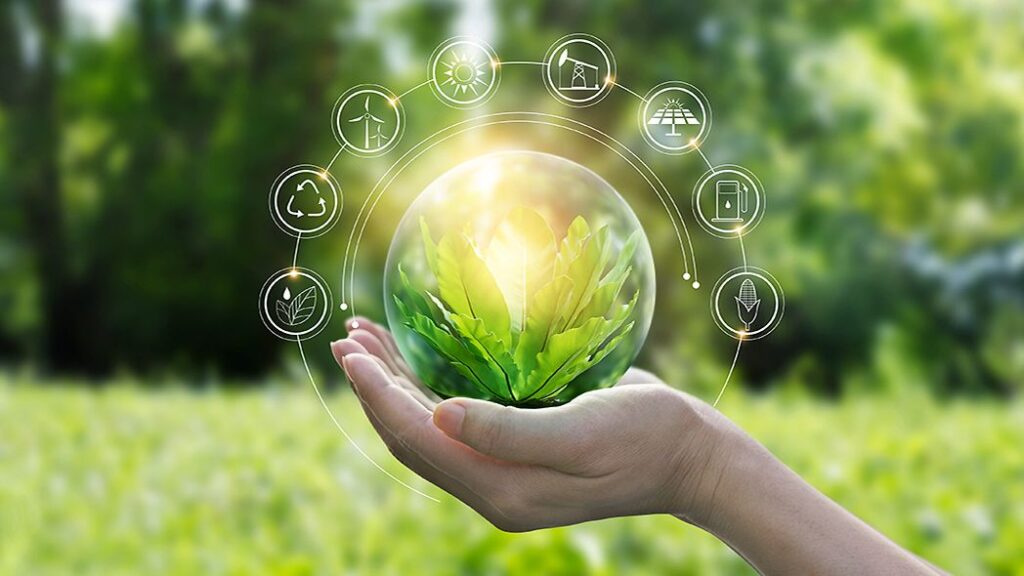Due to rapid advancement in the digital technology, there is a huge transformation in almost all the sectors of work. There has been an increasing trend towards the use of smart and connected devices which has made the Internet of Things (IoT) very popular among the common people. IoT is the global network infrastructure consisting of various devices, e.g., sensors, actuators and appliances that are embedded in the physical objects and are capable to sense, process and communicate information over the network.
Green IoT foreshadows an exciting future in which green networks intimately integrate our physical environment. Green networks in IoT with sustainable designs are guaranteed to reduce operating costs and energy consumption and reduce environmental pollution. IoT will have a significant influence on how we approach certain challenges in our everyday lives, and it will undoubtedly make our lives easier and better.
It is an energy-efficient process (hardware or software). This means connected devices in an energy-efficient process for the purpose of reducing power consumption, the greenhouse effects, and minimizing the emission of CO2. By using green computational units, communication protocols, and network-based architectures with maximum utilization of bandwidth and relatively low energy utilization. The essential element of Green IoT is sustainable design and energy efficient.
Green IoT has three concepts, namely, enabling technologies, leverage technologies, and design technologies. Design technologies refer to interconnections, network architectures, communications protocols, and the energy efficiency of devices.
Potential of Green IoT
Green IoT encompasses a variety of technologies, including green cloud computing networks, green sensing networks, and green RFID tags.
Hardware-based
In an IoT network, the design of integrated circuits (IC) is critical for energy conservation. Green IoT enhances IoT network architecture by integrating sensors and processing power on a single chip to minimize total infrastructure energy consumption, carbon footprint, traffic, and e-waste. Processor-based with an energy-efficient processor that can be split into 2 cores. One core is for low-computing tasks, the other for high-computing tasks. Use the scheduling framework to assign tasks to reduce energy consumption.
Software-based
Data centers can be critical to an energy-efficient IoT network, but they must be made more energy-efficient to be feasible for IoT. The Green Data Center (GDC) is a repository for data dissemination, data management, and data storage. This data is generated by things, systems, and users, etc. An architecture in which an Orchestration Agent (OA) is used in a Client-Server Model and is responsible for context evaluation of servers in terms of resource efficiency, as well as data center management. Cloud computing (CC) is an internet-based virtualization technique. It provides unlimited storage, unlimited computational, and service delivery via the internet. IoT is widespread and the use of CC technology is widespread for the purpose of connecting them.
Real-life examples of Green IoT
Smart Grid
The smart grid is a communication network that collects data from many electrical system sensors to help control energy sources and consumer consumption. It refers to the grid’s capacity to dynamically adjust and re-adjust dynamically in order to supply electricity at the best possible quality and price. This helps to coordinate the amount of energy consumed to ensure the safety and security of the power network. The Smart grid uses many renewable energy sources, including thermal power plants, solar power, wind power plant, and nuclear power plant.
Smart Healthcare
A data centre that allows sharing of patient medical records between hospitals. IoT devices used by patients will continuously check heart rate, blood pressure, body temperature, etc to send information to the data center when the patient is anywhere. Through the analysis process, it will send a warning about the current health status of the patient to the medical staff taking care of and will send medical rules to the patient.
Future of Green IoT
In the future, with the combination of sensors, IoT devices along with the connection to 5G networks and the strong support of AI, this will provide users with green solutions. This means that IoT devices will also be context-aware and be able to perform certain functions, suggesting green forms of communication between people and things and between themselves. The improvement in power in the design phase will make Green IoT popular soon. In fact, IoT devices should sleep when not in use and use routing algorithms during data exchange.
Currently, the areas that Green IoT focuses on include Green RFID Technology, Green Wireless Sensor Network Technology, Green Cloud Computing Technology, Green Machine to Machine Technology, Green Data Center Technology, Green Communication, and Networking, Green Internet Technologies.







